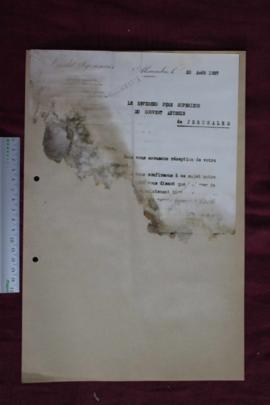Ethiopian Archbishop Residence in Jerusalem
- JM-EARJ
- Fonds
- 1896-01-01-1968-04-23
The Ethiopian archbishop’s residence in the old city preserves a part of Ethiopian community’s archives. These archives are divided into two main sections: the current administrative archival office, which includes all types of administrative documents, and the manuscript section.
-
The Administrative section
In the current administrative archival office, there is an heterogeneous set of documents dated from the end of 19th century to present. There is no historical archives properly speaking. These archives are still used by the local administration for current affairs.
Among all the folders stored in that place, seven include documents created before 1950: folders n°6, 154, 356, 358, 359, 360 and a last one entitled in Amharic “yä-leyu leyu guday däräseññoč käzih yegäññalu” including different types of documents unclassified. In addition to these folders, a book written in 1903-1904 (manuscript in Amharic) was recorded as “folder” n°172 and a report written in 1925 as “folder” 216.
Documents dated before to 1950 found in the archives (ca. 160 documents) are administrative and financial documents, such as payment receipts, cheques, bank documents, financial reports, letters and correspondence including daily issues of the community, etc. These documents are written in Arabic, English, French, German languages. Amharic marginalia are often added to documents in order to give a clue to the topic of the document. Very few documents are fully written in Amharic. 55 documents are written in Arabic. -
The manuscripts section
The manuscripts section carefully preserves numerous parchment and paper manuscripts written in Ethiopian languages (Geez and Amharic). The collection represents more than 760 manuscripts. The oldest one dates back to the 15th century.
Through this collection, one could study the daily life of the Ethiopian religious community established in Jerusalem, and get information to understand all their problems and opportunities, such as housing, supplies, access to public services, administration or worship. Receipts and payment document are witnesses of Ethiopian involvement in local life.
Archbishopric of Ethiopian Orthodox Church in Jerusalem (AEOCJ)


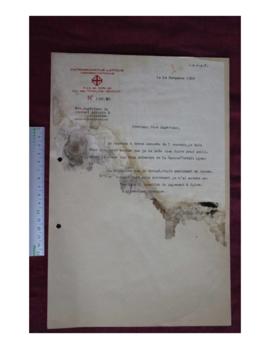
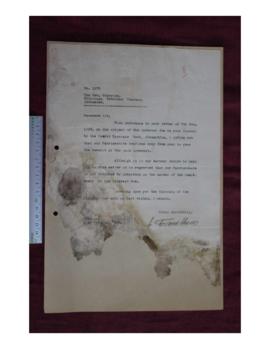
![Letter from [Comte Kinto Mazzolini, General Consul of Italy in Jerusalem] sent to Superior of Eth...](/uploads/r/ethiopian-archbishop-residence-in-jerusalem-earj/0/e/8/0e8c5c54d8a36651e5f2e7a2e8dc62ac33895f724001bab6dc690f2fdf076133/JM-EARJ_AD_006-003_142.jpg)
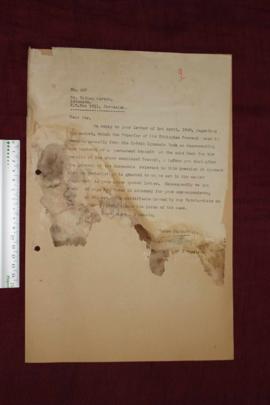
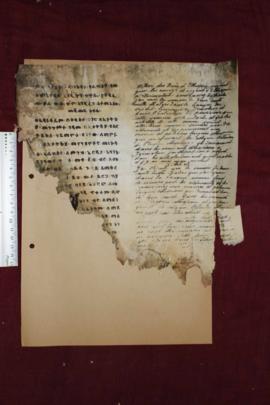

![Certificate from Archimandritre Epiphanios, Chief Secretary of [maybe Greek] Orthodox Patriarchate](/uploads/r/ethiopian-archbishop-residence-in-jerusalem-earj/0/6/c/06cb32f62586ed59e53a00d247537319f096fd14a4a04bcee28b12db7eb8977a/JM-EARJ_AD_006-007_142.jpg)
